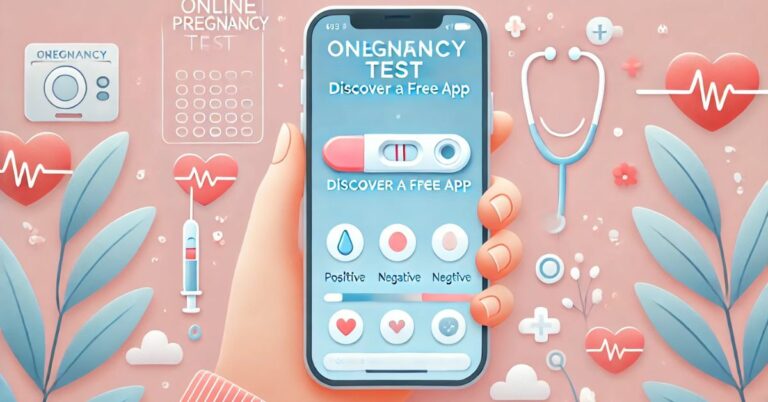Losing photos is upsetting, especially when they hold cherished memories. Therefore, recovering deleted photos from phones is more important than ever.
This article provides simple, legal ways to get your photos back. Whether you use Android or iOS, you’ll find clear steps to restore your images.
Understanding How Deletion Works
When you delete an image, it doesn’t disappear instantly. Your phone handles deletion in a specific way that temporarily makes the file recoverable.
How Phones Handle Deleted Data?
When you delete a file, it isn’t immediately erased from your phone’s storage. Instead, the space is marked as available, but the data remains until new information overwrites it.
This means recovery is possible if you act quickly. However, as new data is collected, the chances of retrieval decrease over time.
Misconceptions About Data Deletion
Many believe that once something is deleted, it’s gone forever. This isn’t true; deleted files can often be recovered if no new data has overwritten them.
Another misconception is that recovery is always guaranteed, but this depends on how much the phone has been used since deletion. Understanding these points helps manage expectations during the recovery process.
Legal and Privacy Concerns
Using recovery software can raise legal questions. It’s important to know what’s allowed and ensure you’re using approved tools.
The Legality of Recovery Software
Not all recovery software is legal or safe to use. To avoid legal issues, always choose authorized, trusted tools.
Some software may violate user agreements or breach security protocols. Stick with reliable sources to ensure your actions are compliant with the law.
Respecting Privacy and Data Laws
Respecting privacy and following data protection laws are crucial when recovering data. Avoid accessing information that doesn’t belong to you, which can lead to legal trouble.
Data recovery should be done ethically and within the boundaries of the law. Always consider the privacy of others when using recovery tools.
Recovering Deleted Files on Android
When you realize something important is deleted, avoid using your phone as much as possible. This minimizes the chance of the data being overwritten, making recovery easier.
Overview of Recover Deleted Files App
The “Recover Deleted Files App” is designed to help you retrieve deleted files on Android devices. It’s simple to use and offers several features to increase your chances of successful recovery.
Key Features and User Benefits
Here’s a list of the main features and benefits of the “Recover Deleted Files App”:
- Ease of Use: The app is designed for quick recovery with just a few taps.
- Deep Scanning: It can scan deeply to find deleted files that might not be immediately visible.
- File Preview: This allows you to preview files before recovering them to ensure you retrieve the correct ones.
- High Success Rate: High success rate in recovering files, especially when used shortly after deletion.
- Compatibility: Works with various Android devices and supports multiple file types.
Step-By-Step Installation and Usage Guide
Below is a step-by-step guide to installing and using the Recover Deleted Files App:
- Download the App: Go to the Google Play Store and search “Recover Deleted Files App.”
- Install the App: Tap on the install button and wait for the app to download and install on your device.
- Open the App: Once installed, open the app to begin recovery.
- Select the File Type: Choose the type of file you want to recover (e.g., images, documents).
- Scan Your Device: Start the scan to allow the app to search for deleted files on your phone.
- Preview and Recover: Review the results, select the files you want to recover and tap recover to restore them to your device.
Recovering Deleted Files on iOS
When files are deleted on iOS, quick action can improve your chances of recovery. Using tools like DataBox can make this process straightforward and effective.
DataBox Overview
DataBox is a specialized app designed to help iOS users recover deleted files easily. It offers several features specific to the iOS environment.
Functional Advantages for iOS Users
DataBox provides critical benefits for those using iOS devices. Here are the main advantages:
- User-Friendly Interface: The app is designed with a simple and intuitive interface, making it easy to navigate.
- Optimized for iOS: Tailored for iOS devices, ensuring compatibility and efficient performance.
- Secure Recovery: Ensures that recovered files are secure and protected.
- Supports Multiple File Types: Can recover a wide range of file types, giving users more flexibility.
- High Recovery Rate: Offers a high success rate for file recovery, especially when used soon after deletion.
Comprehensive Tutorial on App Installation and Operation
Here’s how to install and use DataBox for recovering deleted files on your iOS device:
- Download the App: Go to the App Store and search “DataBox.”
- Install the App: Tap on the install button and allow the app to download and install on your device.
- Launch the App: Open DataBox from your home screen to start the recovery process.
- Choose File Type: Select the type of file you need to recover (e.g., images, documents).
- Start the Scan: Run a scan to let the app search for deleted files on your device.
- Preview and Recover: Review the scan results, select the files you want to restore and tap recover to save them to your device.
Advanced Tools and Techniques
When essential recovery apps don’t work, advanced tools can help. These tools are designed for more complex recovery tasks.
More Sophisticated Recovery Tools
Advanced tools offer deeper scans than essential apps. They can recover data even after heavy device use.
These tools are useful when files are hard to retrieve. They require more technical knowledge but are very effective.
Software Options for Deeper Recovery Needs
Several powerful software options are available. Tools like Disk Drill and Dr.Fone offer advanced features for deeper recovery.
They can retrieve files that are overwritten or corrupted. Using these tools can significantly increase your chances of success.
Best Practices for File Management and Backup
Regular backups are key to preventing data loss. Following these practices can save you from the trouble of recovery.
Recommendations for Regular Backups
It is essential to back up your files regularly. Set up automatic backups at least once a week.
For extra security, use both cloud storage and physical drives. Regular backups reduce the risk of losing important files.
Comparison of Backup Solutions: Cloud, External Drives, and Built-in Features
Different backup options offer other benefits. Cloud storage is convenient and accessible but needs an internet connection.
External drives are secure and don’t rely on the internet, but they are less portable. Built-in phone features like iCloud or Google Drive offer automatic backups but may have storage limits.
Troubleshooting Common Issues in File Recovery
Recovery can face challenges, even with the best tools. Knowing how to troubleshoot helps improve your success rate.
Addressing Potential Problems and Solutions
Common issues include incomplete recovery or software not finding files. To fix this, ensure your recovery software is up to date.
If a file is only partially recovered, try a deeper scan. If one tool doesn’t work, try another for better compatibility.
Tips on Dealing with Overwritten Data
Overwritten data is a big challenge in recovery. Here are some tips:
- Stop Using the Device: Avoid further use to prevent more overwriting.
- Use Deep Scans: Choose tools with deep scan features to locate overwritten files.
- Try Multiple Tools: Use different tools for better results if one fails.
- Consider Professional Help: Seek professional services for critical data recovery.
Summary of Recovering Deleted Photos from Your Phone
Recovering deleted photos from your phone is easier when you act fast and use reliable tools. Apps like “Recover Deleted Photos” for Android and DataBox for iOS can help.
Regular backups are essential to prevent data loss. Always use legal methods for a smooth recovery process.












